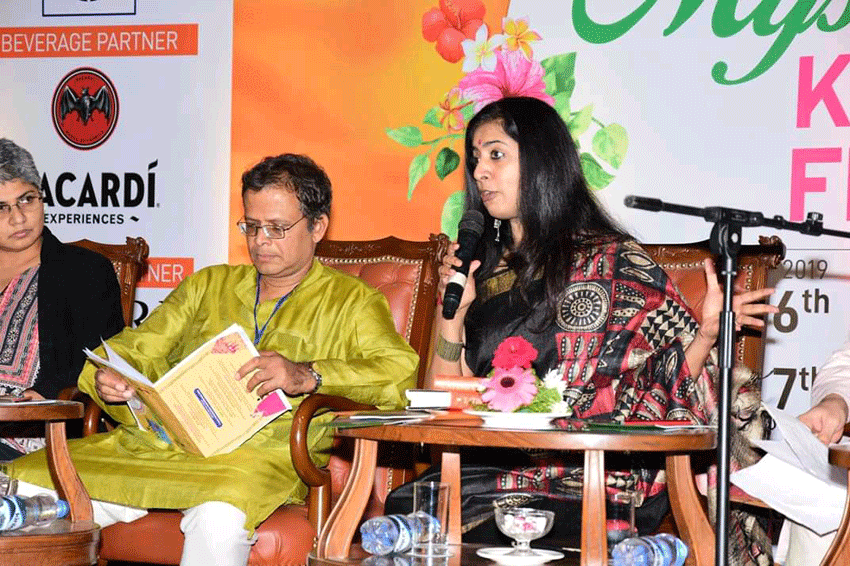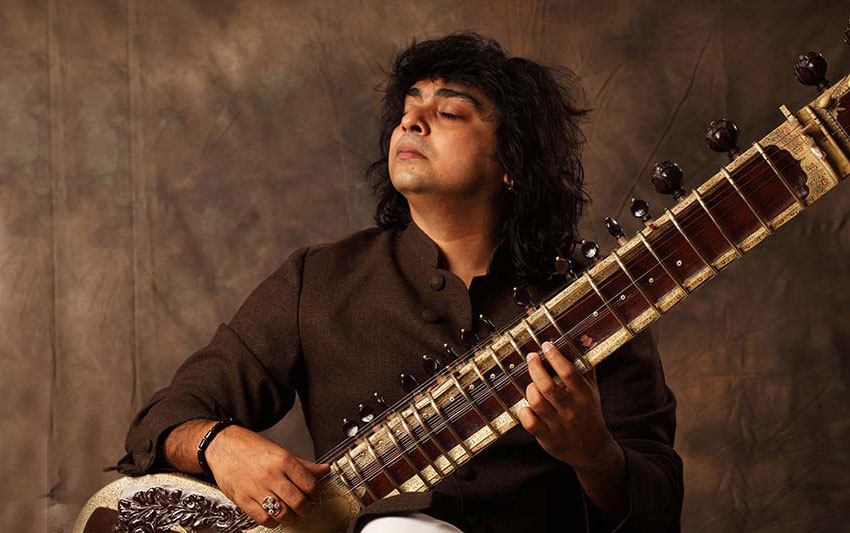Godliness is a sincere attempt to see the God within. Seeing is believing as they say. When the world around you has changed so many colors then, your realization and perception changes in many hues.
Our actual enemy is not any force exterior to ourselves, but our own crying weaknesses, our cowardice, our selfishness, our hypocrisy, our purblind sentimentalism as said Sri Aurobindo.
Why do we then sincerely pour so much of our energy into rash behavior, harsh words and moribund mental games? We set standards to be followed, yet we break them with impunity.
The Mystic Kalinga 2019 embarked on the journey of poetry, bhakti, and devotion in 2016 with the arrival of Sadguruji at Bhubaneswar. The event mesmerized and enthralled the audience on thoughts of the spiritual guru and the similes found in Odisha. The entire event was planned with translations from Bhakti poetry from the entire country by noted writers like Lata Mani, Mani Rao, Jerry Pinto, and Arundhati Subramaniam the creative director. The festival commenced on awards to Shri Harihar Mishra and Sri Ramakant Rath for their exemplary services to poetry in Odisha.
The Mystic Kalinga was flagged off with poet Ramakant Rath reciting excerpts from the magnum opus Sri Radha on how Radha dies a natural death every day. The stalwart Oriya poet, who was felicitated by Mystic Kalinga team, Harihar Mishra narrated his favorite mystic poem on sunyata and his view on the void of his own being. Sitakant Mahapatra spoke on Jagannath Das and Bhimabhoi and their mystical values in Oriya bhakti poetry. Meditation is possible living within society is what Sitakant Mohapatra addressed the audience. The recipients of Mystic Kalinga Awards at the festival were Sri Ashok Vajpeyi and Harihar Mishra.
Mr. Prateek Pattnaik got the special mention award for digitizing ancient Oriya literature for the web readers of Oriya literature. A special souvenir was released on the occasion. from what Ramakant Ratha on the first day of Mystic Kalinga that he has no role in the context of discussing poetry except that he was a poet, that composing poetry was his business not discussing poetry. Archana Nayak, the Oriya critic, and author said that there are four kinds of bhakti. Among it, the bhakti of love is the best form of love. The first day saw the Bhakti of Radha in astapadis of Gita Govinda in a discussion moderated by Kedar Mishra and an excellent display of dance compositions by Ms. Sharmila Biswas, an Odissi dance exponent.

The dialogue continued on the 2nd day of the festival when mystic elements in Odia literature was discussed. Kedar Mishra started the deliberation as the moderator on the poetry of Jayadeva and contribution to mystical traditions. Radha Krishna is not the only motif in the literature but also the normal human beings also part of the medieval mystic poetry. Love lyrics was mixed with prayers for the Lord Jagannath. Sariya Bhikaji in his “Thakamana chala jiba ..” describes the essence of Oriya poetry. Balarama Das changed the content of Purana in which Laxmi is the main character and Jagannath is relegated to the background.
We don’t engage with the feeling of Ramakrishna as academician Bishnu Mohapatra opined. We tamed the feelings to bookish reality. The palm script manuscripts were sung in eulogy not discussed in meetings. We have to make our thoughts imaginative. “Gana misra bhakti” is what people were practicing in that period. Achyutananda Das’s Mallika described the future of spirituality. Kali Bhagavata as prescribed was adjugated by Britishers. It was a subversion of present and talking of future. Sharmila Biswas the Odissi exponent described the fleeting touch of bhakti in her own inner encounters with bhakti. Her compositions in Jayadeva astapadis was performed.
In another session, Indira Peterson described Tamil Shaivite traditions in the session on 6th and 7th century. She made poetic references to the poetry of the period and how iconic structures of Shiva is depicted in the poetry. The child Sambandar describes in his poetry of Shiva as “one who embraced the lord through wisdom”. He also sings while he is wearing a woman’s earring in one ear! She referred to a poetry of Sundarmurthy, 7th century Tamil poet and sang the kritis. Those hymns were not that lasted. Continuous individuality now is the crux of the Tanjavore temples. The Oduvars in these temples sing vrittam. The songs described the ritualistic folklore associated with the deity and the kingdom.
[adrotate group=”9″]
On the transcendental nature of Bhakti, Lata Mani opined that Binarization of traditions in the love for the divine. To love is to know that is bhakti, nyana, tantra, and Ghyana. The matter is the basic, nyana is an act of love, Ghyana is to how to love. The inquiry is essential. Bhakti is not a misperception in terms of only feelings. This has to change to the superior level of humanity. one day in the year 1993, head-on collision in an accident changed Mataji life.
Her life changed that same year when she has illuminated into another being who articulated the sacred as a cognitive resource.
Yet another session on translations saw Jerry Pinto immersed in the process of not knowing the process of translation when he delved into Marathi literature of the medieval period. Mani Rao spoke about the dramatic elements in reciting the Gita and her translation of it in its dramatic context. It was not commissioned work so the translation happened as there were mental barriers. The book had her timbre but it was the process of translation brought out the interplay of the author’s mind. Anand Thakore said Surdas bhajan has a cyclic structure. The lines were to be left being repetitive. I had to work on the gender and nouns when they were repeated. This discussion happened as they spoke in 1st-day session and later followed it up with an actual recitation on the next day with the original text. The act of doing and being done is not an ordinary passion. It requires better juxtaposition of thought process to give and take the author out of ancient texts and get back to original for a translator. A bit of all authors keep residing in you as you come out of the stupor of imagining yourself in their role and legacy in continuing the thought to next generation.

[adrotate group=”9″]
The theatrical performance by Sanjukta Wagh on the Kabir panthi mode in Kathak interspersed with translation from texts by Jerry Pinto steered the festival to another level of experience.
Both Kalapini Komkali’s Kabir bhajans and Shabnam Virmani’s mystical interludes from various sources of bhakti poet were exhilarating peaceful renditions.
Overall you were one with the movement of the pure psyche and the quest for the sublime in the devotion.









